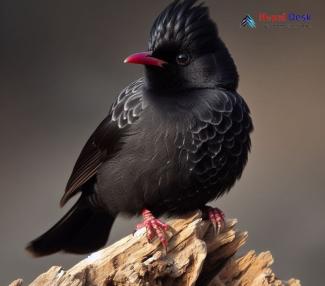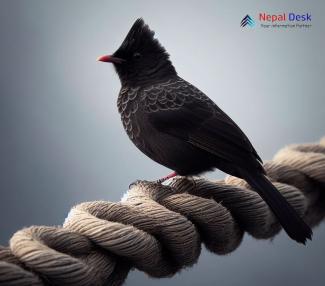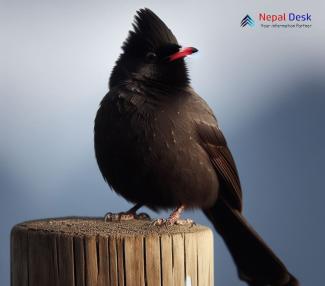A charismatic avian species, the Himalayan Black Bulbul, never fails to captivate birdwatchers and nature aficionados alike. With its striking appearance and delightful song, it inhabits various regions throughout Asia, including the majestic Nepal. In this article, join us as we embark on an intriguing adventure, delving into the taxonomy, physical attributes, habitat, and diet of Himalayan Black Bulbul and its presence in Nepal.
Decoding the Taxonomy of the Himalayan Black Bulbul
The alluring Himalayan Black Bulbul is classified under the family Pycnonotidae and bears the scientific moniker Hypsipetes leucocephalus. First documented by British ornithologist John Gould in 1836, several subspecies of this bird are scattered across Asia; however, their shared features make them undeniably identifiable as Black Bulbuls.
Gorgeous Features That Make It Stand Out
Sporting a medium size at around 20 to 25 cm in length, the most remarkable aspect of the Himalayan Black Bulbul is its prominent black crest resembling a fashionable pompadour hairstyle. Dark grey or black feathers cloak its body while contrasting white or light grey hues adorn its head and neck. To top it all off, its vibrant red eyes add a unique touch that's impossible to overlook.
Preferred Living Spaces
These stunning birds prefer settling in subtropical or tropical moist montane forests found along the Himalayas' foothills. They also occupy secondary-growth forests and open regions close to human settlements like gardens and plantations. Their preferences lean towards habitats abundant with food sources.
What's for Dinner?
The main food sources for these enchanting birds include insects, berries, fruits, seeds, and small vertebrates such as lizards. They forage in groups and display impressive agility, adeptly catching prey mid-flight or swooping down on insects while skillfully navigating through dense foliage.
Nepal: A Prime Spot to Observe the Himalayan Black Bulbul
Nepal is a haven for observing the Himalayan Black Bulbul in its natural habitat. From 1000 meters to about 3500 meters above sea level, they can be found across numerous elevations due to these heights' rich biodiversity. Prime birdwatching opportunities arise near Kathmandu Valley, Annapurna Conservation Area, and national parks like Chitwan and Bardia, providing ample chances to admire these elegant creatures.
Fun Fact:
One charming trait of the Himalayan Black Bulbul is its melodious and dulcet call that echoes throughout the forests. This species is celebrated for its beautiful singing voice and has been held in high esteem in local folklore as a symbol of happiness and good fortune.
In summary, the Himalayan Black Bulbul never ceases to steal the hearts of nature lovers with its exceptional blend of eye-catching features, melodious calls, and mystifying presence in the captivating Himalayas. Keep your eyes peeled while trekking through these scenic landscapes—you might just witness the Himalayan Black Bulbul gracing you with its irresistible tunes reverberating among the trees.




